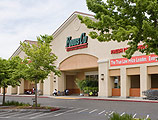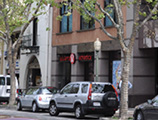A couple months ago, I called my doctor to renew a prescription at Walgreen’s. She suggested trying NowRx, a Silicon Valley pharmaceutical start-up offering home delivery. It turned out that with no insurance required, NowRx would deliver 90 days’ worth of a generic heartburn medication* for $14.50. Factor in the delivery cost, and this start-up is giving away its drugs.
Walgreen’s charge for the identical drug? $254 without insurance, an $18 co-pay if insured. Hence, you pay an additional $3.50 for the privilege of fetching your prescription yourself. This comparison suggests that one—or both—of these business models is fatally flawed.
NowRx feels like pharma’s Uber, that is, brilliant for consumers, but unlikely to ever make a buck. One knowledgeable source said the company’s only real play is to sell itself to Amazon after amassing a sufficiently impressive customer list. This makes sense. Since it acquired PillPack, Amazon has been cutting its usual swath through the prescription delivery business. Along with 3,000 other drugs, Amazon Pharmacy sells that heartburn med for $32.10.
And guess who’s joined the fray with the Mark Cuban Cost Plus Drug Company? A smart guy, Cuban avoids the last mile delivery cost conundrum by mailing you the drugs. He sells this same med for $13.50.
It’s worth pointing out, however, that home delivery and mail order have been around over twenty years, and that CVS, Walgreens and Rite-Aid are still standing. Even with Amazon pounding on their doors, the net won’t be fatal to the big three; rather, it will likely prove a chronic condition depriving them of vigor. Perhaps more troubling to the nation’s biggest pharmacy chains are the ever declining rates of reimbursement they receive from the medical insurers.
How are the drug retailers combating these multiple headwinds? CVS, the leader of the pack, has become the nation’s biggest “pharmacy benefit manager.” What’s that? Simplistically, a middle-man who negotiates volume discounts with drug manufacturers, marks up the product to its retailers…and then pockets the spread. Think mid-level cocaine dealer. Still, CVS has announced it will close 900 stores (from a total of 9600) over the next three years.
Walgreens has been closing stores since 2015, and has 300 plus shuttered stores available for sublease. Rite Aid announced the closure of another 63 stores in December. The company has been trying for years to return to profitability by slashing operating expenses, the retailer’s version of the Hail Mary.
Surprisingly, inside sources confided that neither Walgreens nor Rite Aid make any real money in the “front end”, that is, the vast bulk of their stores’ sales area where they hawk everything from sunblock to tortilla chips. While the front ends in individual stores may be quite profitable, the chains as a whole make their profits from pharmacy operations alone.
In line with the insiders’ observation, CVS is adding primary care centers (formerly doctors’ offices) in a couple hundred of its stores. To do so, it must reduce its sales areas by several thousand feet, then partition off and fully equip the doctor’s offices. This will cost at least a million a store. Thus, in order to make that downsizing profitable, the new doctor’s office would have to gross enough to repay that million with interest and handle the vastly increased overhead the office would entail (doctors are expensive). Would you take this risk if your sales areas were actually profitable?
Brick & mortar pharmacies aren’t going away. For every bucket-full of cheap generic meds with instructions no more complicated than “take one a day after eating”, there are drugs that cost more than a used car or require detailed instructions from a very patient pharmacist. For every recurring prescription, there are emergency meds like antibiotics and antivirals that patients need immediately. Drug stores aren’t going away, but little imagination is required to envision the nationals shrinking thousands of their stores to the size of the mom & pop pharmacies of yesteryear.
If you have a drug store in a fourteen thousand foot building—roughly the industry’s standard size—that’s only making money in its pharmacy, your years of collecting fat rent checks are likely numbered. If you own, say, a Walgreens—or are thinking of buying one—you must somehow ascertain whether it’s one of the chain’s winners. (This, by the way, is far easier said than done.) If the store’s a loser paying anywhere close to market rent, you’d better have a brilliant alternative use for it when it goes dark.
*If you’re in real estate and don’t have heartburn, you’re not trying hard enough.






















